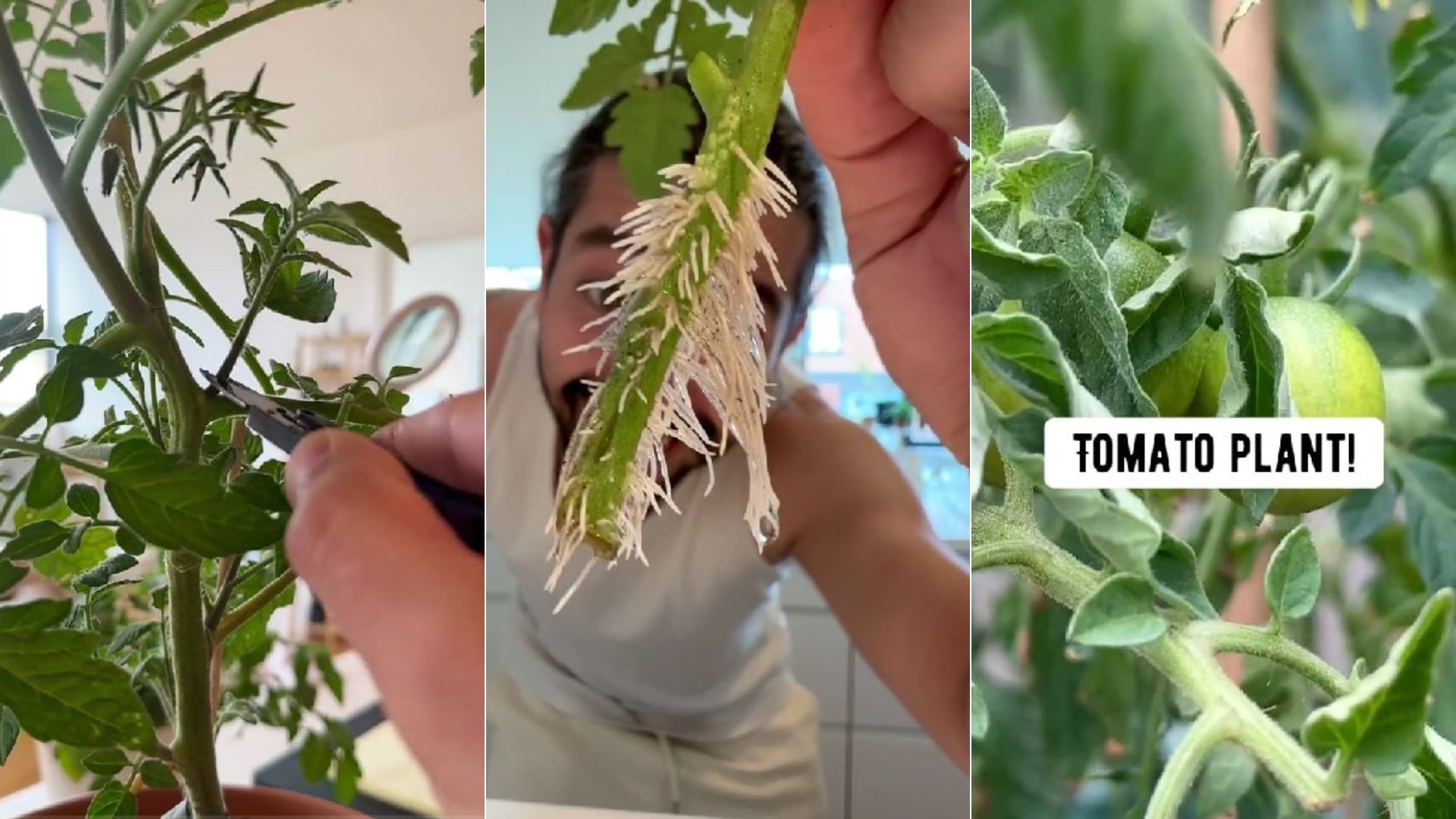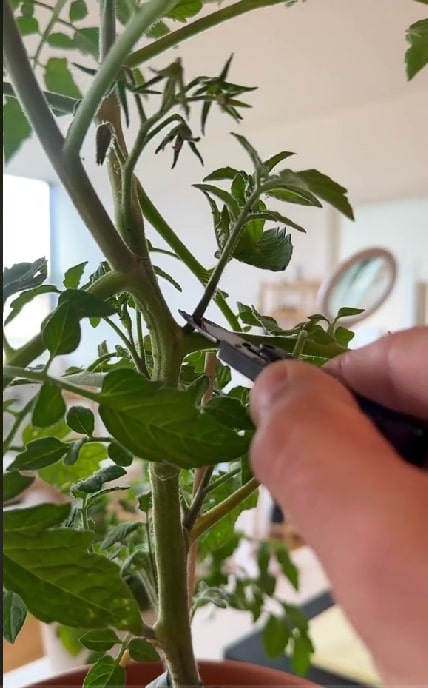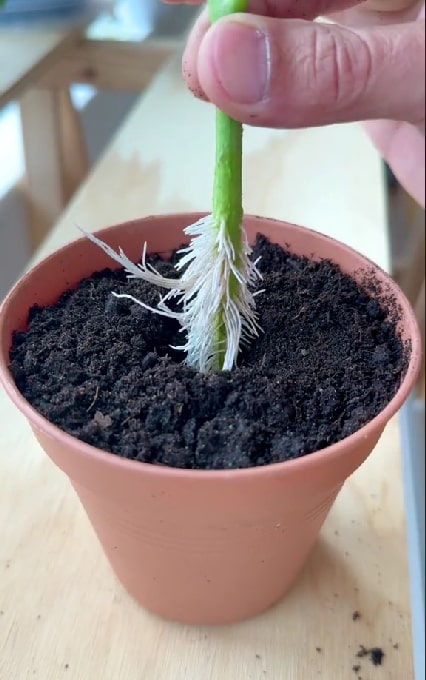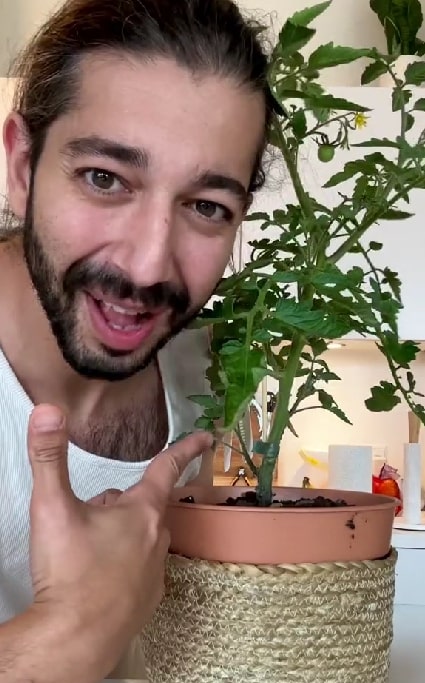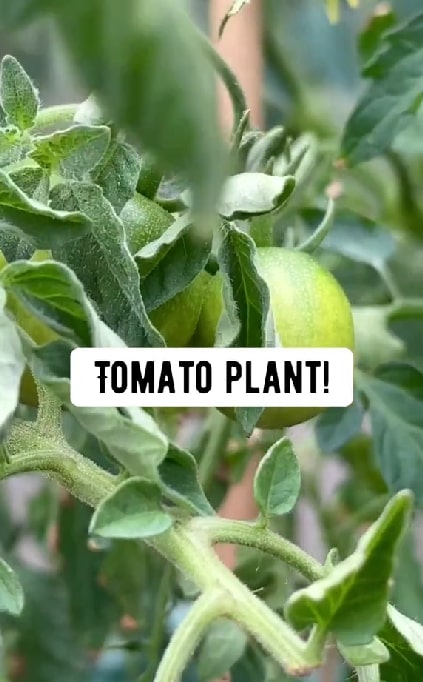An infinite supply of tomatoes seems too good to be true, am I right? And yet, it is something you can do at a very affordable price.
All you need is a tomato plant, pruners, and a jar with water. Armen Adamjan is a video creator and author who brought this technique closer to everyday gardeners.
Here’s how to make the best of it!
The Cloning
Adamjan starts off his video by saying that if you have a tomato plant and look closely in-between the stem and a leaf, you’ll see another stem growing.
He advises to snip this other shoot with a pair of pruners or scissors. Place it in a glass of water, and in a couple of days you’ll get a massive growth of roots.
Look at the roots, exclaims Adamjan while showing off his cloned tomato plant.
Once you have decent root growth, all you have to do is grab a pot with soil, plant this in the middle, and this little baby will grow into a whole new tomato plant!
I’d suggest using high quality, fertile, and well-drained potting mix for this purpose so you can give your seedling the best chance of success.
And the best part of this technique is that you can repeat it time after time as your new tomato plant keeps growing, adds Adamjan.
The Benefits
So how does this method help and is it superior in any way to the traditional method of growing tomatoes?
Well, it is much more affordable since you don’t have to purchase numerous tomato plants. Find a decent-sized area for this purpose and plant your tomatoes in it, cloning them as they grow.
Later on, you can implement some strategies to get more tomatoes, such as giving them plenty of sunlight, enough water, and a good amount of nutrients.
Cloning tomatoes this way is also convenient because you don’t need a large garden to do so. You can do it on your balcony with a couple of pots and an improvised trellis.
Finally, Adamjan’s method is an eco-friendly way of sustaining yourself and reducing your carbon footprint.
How?
Well, agriculture contributes to about 10% of total US greenhouse gas emissions, excluding the emissions of fossil fuels the machines use. (1)
In addition to that, produce we buy in stores is usually packaged in plastic, and the majority of plastic packaging in the US is sent to landfills (at least 85% in 2021). (2)
Therefore, by cloning your own tomatoes following Adamjan’s method, you can sustain yourself and your family in an affordable, convenient, and eco-friendly way.
The Reactions
@creative_explained How to clone tomatoes! 🍅🤯 #tomato #tomatoes #howto #gardenhacks #gardening #plantsoftiktok #plantbased #diy #planttiktok ♬ original sound – Armen Adamjan
So what’s everyone saying about this method?
They mostly say the same thing: Infinite tomato 🍅🌱 glitch.
There are also platform users that seek advice: What if I missed plucking a sucker and now it’s grown so much it’s producing fruit? Leave it?
While some users say that they haven’t been able to replicate the results and only ended up with wilted and dead plants.
I tried it and it took about 2 weeks to see some roots. My cloned tomato plant is thriving in the greenhouse right now.
Why don’t you try it and let me know what you think in the comments?
References:
1. Joiner, E. & Toman, M. A. (2023). Agricultural Greenhouse Gas Emissions 101. Resources for the Future.
2. Alves, B. (2023). Plastic Waste in the United States – Statistics & Facts. Statista.

